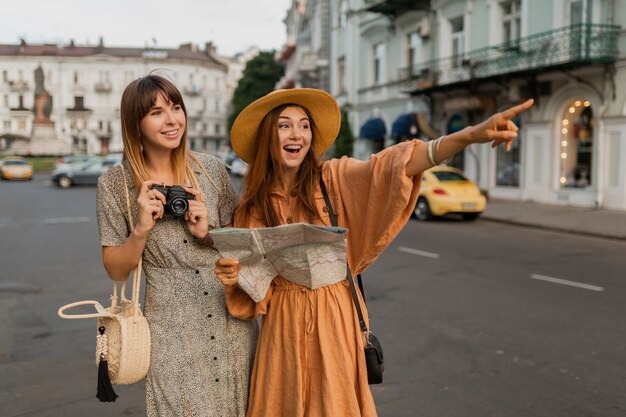Creative Trends in Travel You Should Try
Travel has always been about exploration, but the way we experience the world is constantly evolving. From immersive cultural exchanges to unconventional accommodations, new trends are reshaping how we plan and enjoy our journeys. If you’re looking to break away from the ordinary, here are some of the most exciting creative trends in travel worth considering.
Slow Travel: Savor the Journey
Gone are the days of cramming a dozen destinations into a two-week trip. Slow travel encourages deeper connections with fewer places, allowing you to truly absorb the local culture. Instead of hopping from city to city, consider spending a week or more in one location, renting an apartment, and living like a local.
Example: Instead of a whirlwind tour of Italy, spend two weeks in a single region like Tuscany. Take cooking classes, visit small vineyards, and explore hidden villages at a leisurely pace.
Voluntourism: Travel with Purpose
Combining travel with meaningful work, voluntourism lets you contribute to communities while experiencing a destination in a unique way. Whether it’s teaching English, assisting with wildlife conservation, or helping build infrastructure, these experiences create lasting memories and impact.
Example: Join a sea turtle conservation project in Costa Rica, where you can patrol beaches at night, monitor nests, and release hatchlings into the ocean.
Digital Detox Retreats
In an always-connected world, unplugging has become a luxury. Digital detox retreats offer a chance to disconnect from screens and reconnect with nature, yourself, and fellow travelers. These escapes often take place in remote locations with limited or no Wi-Fi.
Example: Book a stay at a cabin in the Norwegian fjords, where the focus is on hiking, reading, and stargazing—without the distraction of notifications.
Microadventures: Explore Close to Home
You don’t need to cross oceans to have an adventure. Microadventures are short, local trips that offer a fresh perspective on familiar surroundings. Think camping in a nearby national park, cycling through countryside trails, or even exploring your own city as a tourist.
Example: Plan an overnight kayaking trip on a nearby river, complete with a riverside campfire and a sunrise paddle.
Workations: Blend Productivity and Exploration
Remote work has opened doors for blending work and travel. A workation allows you to set up shop in a new location—whether a beachside café in Bali or a cozy mountain lodge in Switzerland—while maintaining your professional commitments.
Example: Spend a month in Lisbon, working from coworking spaces during the day and exploring the city’s historic neighborhoods and vibrant food scene in your free time.
Alternative Accommodations: Beyond Hotels
From treehouses to converted lighthouses, travelers are increasingly seeking unique places to stay. These unconventional lodgings add an extra layer of adventure to any trip.
Examples:
- Sleep in a glass igloo in Finland for a front-row view of the Northern Lights.
- Book a stay in a historic castle in Scotland, complete with medieval banquets.
Food Tourism: Taste Your Way Through a Destination
Food is one of the most authentic ways to experience a culture. Food tourism goes beyond restaurants, focusing on hands-on experiences like market tours, foraging trips, and cooking classes with local chefs.
Example: In Japan, join a sushi-making workshop in Tokyo or a sake-tasting tour in Kyoto to dive deep into the country’s culinary traditions.
Solo Female Travel: Empowerment on the Road
More women than ever are embarking on solo journeys, seeking independence and self-discovery. Destinations and services are increasingly catering to female travelers with safety-focused tours, women-only accommodations, and supportive communities.
Example: Join a women’s hiking group in Morocco, where you’ll trek through the Atlas Mountains while connecting with like-minded travelers.
Eco-Conscious Travel: Leave No Trace
Sustainability is no longer a niche concern—it’s a priority for many travelers. Eco-conscious travel focuses on minimizing environmental impact through choices like carbon-offset flights, plastic-free packing, and staying at eco-lodges.
Example: Visit Costa Rica’s Osa Peninsula, where lodges operate on solar power and tours emphasize wildlife conservation.
Dark Tourism: Exploring History’s Complex Sites
Dark tourism involves visiting places with significant historical, often somber, backgrounds—such as former battlefields, disaster sites, or memorials. These trips offer profound insights into humanity’s past.
Example: A visit to Auschwitz-Birkenau in Poland provides a sobering but important perspective on World War II history.
Conclusion: Make Your Next Trip Unforgettable
Travel is what you make of it, and these creative trends offer fresh ways to experience the world. Whether you’re drawn to slow travel, voluntourism, or an off-the-grid retreat, stepping outside your comfort zone can lead to richer, more meaningful adventures. The next time you plan a trip, consider embracing one of these trends—you might just discover a new way to wander.



